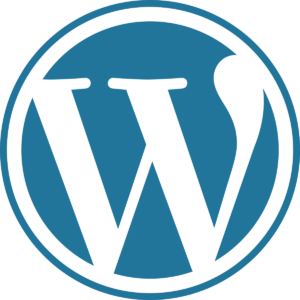What is WordPress, and how does it work?

WordPress is a popular and powerful content management system (CMS) used by over 40% of websites on the internet today. It’s an open-source platform with a user-friendly interface that makes website building accessible to everyone, regardless of technical expertise. WordPress has a lot to offer, including a vast library of plugins and themes that allow for easy customization, making it a versatile CMS that can fit any need. In this article, we’ll delve into everything you need to know about WordPress, from its history to its features, benefits, and how to get started.
What is WordPress?
WordPress is a free and open-source content management system (CMS) that powers millions of websites globally. It was first launched in 2003 by Matt Mullenweg and Mike Little as a blogging platform. However, it has since evolved into a versatile CMS that allows users to create different types of websites such as e-commerce sites, portfolios, and even social networks. WordPress is built using PHP programming language and uses a MySQL database to store website data.
Features of WordPress
WordPress offers a broad range of features that make it an ideal CMS for websites of all kinds. Here are some of the features that set WordPress apart from other CMS:
Customizable Design: WordPress allows users to choose from thousands of free and premium themes, or create their own custom design using HTML, CSS, and PHP. The platform is highly customizable, which means users can change almost anything on their website to suit their preferences.
User-friendly Interface: WordPress has a simple and intuitive user interface that makes it easy for anyone to use. The platform also has a helpful user community that provides tips and tutorials to help users navigate the platform.
Media Management: WordPress includes a media library that makes it easy to manage images, videos, and other media files. The media library allows users to upload, edit, and delete media files from their website.
SEO-friendly: WordPress is designed to be SEO-friendly, meaning it’s optimized for search engines. The platform has built-in SEO features, including permalinks, meta descriptions, and title tags. Users can also use SEO plugins like Yoast SEO to optimize their website further.
Plugins and Add-ons: WordPress has a vast library of plugins and add-ons that allow users to add new features to their website quickly. Plugins are small pieces of software that can be added to WordPress to enhance its functionality. For example, there are plugins for SEO, security, e-commerce, social media, and many more.
Benefits of WordPress
WordPress has a lot of benefits for website owners. Here are some of the benefits:
Affordability: WordPress is a free CMS, which means website owners can save money on development costs. The only expenses website owners may incur are for website hosting and purchasing premium plugins and themes.
Flexibility: WordPress is a versatile platform that can fit any need. It can be used to create different types of websites such as e-commerce sites, portfolios, and blogs.
Scalability: WordPress is designed to handle websites of all sizes, from small blogs to large e-commerce sites with thousands of products.
Security: WordPress is a secure platform that’s regularly updated to address security vulnerabilities. Website owners can also enhance the security of their websites by using security plugins and following best practices.
Community Support: WordPress has a large and active community of developers and users. Users can get help and support from the community through forums, blogs, and social media groups.
How to Get Started with WordPress
Starting with WordPress is easy, and you can have your website up and running in no time. Here’s how to get started:
Choose a Domain Name: A domain name is the address people will use to access your website. Choose a name that is easy to remember and relevant to your website’s purpose.
Choose a Web Host: Web hosting is the service that provides server space for your website to exist on the internet. Choose a web host that offers reliable and fast services.
Install WordPress: Many web hosts offer a one-click installation process for WordPress, making it easy to set up your website. Once installed, you can log in to your WordPress dashboard and start building your website.
Choose a Theme: A theme is a pre-designed template that determines your website’s appearance. WordPress offers thousands of free and premium themes to choose from. You can also create your own custom theme.
Install Plugins: Plugins are software components that add new features and functionality to your website. WordPress has a vast library of plugins to choose from, including security, SEO, and e-commerce plugins.
Create Content: Content is the backbone of any website. Use WordPress’s built-in editor to create pages and posts for your website. You can also add media files like images and videos to your content.
Optimize for SEO: Search engine optimization (SEO) is the practice of improving your website’s ranking in search engines like Google. WordPress has built-in SEO features, including meta descriptions, title tags, and permalinks. You can also use SEO plugins like Yoast SEO to optimize your website further.
Conclusion
WordPress is a powerful and versatile content management system that offers many benefits to website owners. Its ease of use, customizability, affordability, and security make it a popular choice for creating websites of all kinds. With WordPress, you can create a website that is uniquely yours and meets your specific needs. By following the steps outlined in this article, you can get started with WordPress and build your website in no time.
